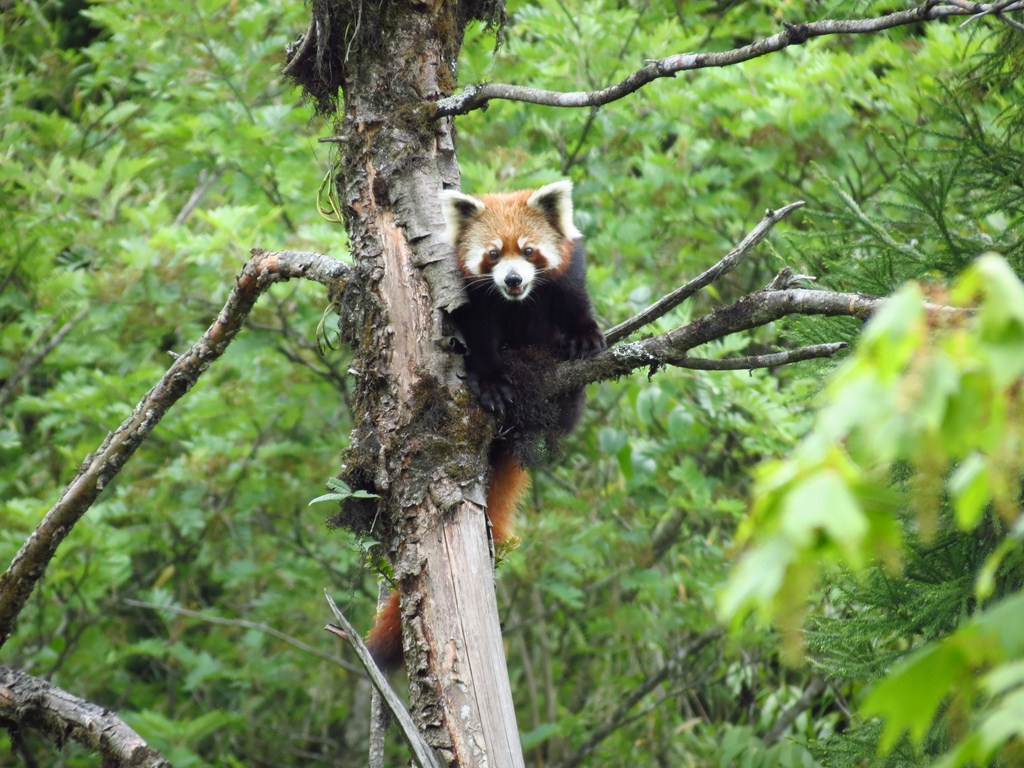|
Leiothrix Argentauris
The silver-eared mesia (''Leiothrix argentauris'') is a species of bird from South East Asia. Taxonomy and distribution The species was once placed in the large Old World babbler family Timaliidae, but that family has recently been split with this species being placed with the laughingthrushes in the new family Leiothrichidae. The species is sometimes placed in its own genus ''Mesia'', or in the genus ''Leiothrix'' with the red-billed leiothrix. There are seven described subspecies, with considerable variation in plumage between them. Further research is needed to establish if this represents a single species or not.Collar, N. J. & Robson C. 2007. Family Timaliidae (Babblers) Pp. 269 – 270 in; del Hoyo, J., Elliott, A. & Christie, D.A. eds. ''Handbook of the Birds of the World'', Vol. 12. Picathartes to Tits and Chickadees. Lynx Edicions, Barcelona. The subspecies and their distributions are: *''M argentauris argentauris'' (Hodgson, 1837) - Northern and eastern India, Bh ... [...More Info...] [...Related Items...] OR: [Wikipedia] [Google] [Baidu] |
Brian Houghton Hodgson
Brian Houghton Hodgson (1 February 1801 – 23 May 1894) was a pioneer natural history, naturalist and ethnologist working in India and Nepal where he was a British Resident (title), Resident. He described numerous species of birds and mammals from the Himalayas, and several birds were named after him by others such as Edward Blyth. He was a scholar of Newar Buddhism and wrote extensively on a range of topics relating to linguistics and religion. He was an opponent of the British proposal to introduce English as the official medium of instruction in Indian schools. Early life Hodgson was the second of seven children of Brian Hodgson (1766–1858) and his wife Catherine (1776–1851), and was born at Lower Beech, Prestbury, Cheshire. His father lost money in a bad bank investment and had to sell their home at Lower Beech. A great-aunt married to Beilby Porteus, the Bishop of London, helped them but the financial difficulties were great. Hodgson's father worked as a warden of the M ... [...More Info...] [...Related Items...] OR: [Wikipedia] [Google] [Baidu] |
Bird Migration
Bird migration is a seasonal movement of birds between breeding and wintering grounds that occurs twice a year. It is typically from north to south or from south to north. Animal migration, Migration is inherently risky, due to predation and mortality. The Arctic tern holds the long-distance migration record for birds, travelling between Arctic breeding grounds and the Antarctic each year. Some species of Procellariiformes, tubenoses, such as albatrosses, circle the Earth, flying over the southern oceans, while others such as Manx shearwaters migrate between their northern breeding grounds and the southern ocean. Shorter migrations are common, while longer ones are not. The shorter migrations include altitudinal migrations on mountains, including the Andes and Himalayas. The timing of migration seems to be controlled primarily by changes in day length. Migrating birds navigate using celestial cues from the Sun and stars, the Earth's magnetic field, and mental maps. Histor ... [...More Info...] [...Related Items...] OR: [Wikipedia] [Google] [Baidu] |
Birds Of Hong Kong
Birds are a group of warm-blooded vertebrates constituting the class Aves (), characterised by feathers, toothless beaked jaws, the laying of hard-shelled eggs, a high metabolic rate, a four-chambered heart, and a strong yet lightweight skeleton. Birds live worldwide and range in size from the bee hummingbird to the common ostrich. There are over 11,000 living species and they are split into 44 orders. More than half are passerine or "perching" birds. Birds have wings whose development varies according to species; the only known groups without wings are the extinct moa and elephant birds. Wings, which are modified forelimbs, gave birds the ability to fly, although further evolution has led to the loss of flight in some birds, including ratites, penguins, and diverse endemic island species. The digestive and respiratory systems of birds are also uniquely adapted for flight. Some bird species of aquatic environments, particularly seabirds and some waterbirds, have further ... [...More Info...] [...Related Items...] OR: [Wikipedia] [Google] [Baidu] |
Birds Of Yunnan
Birds are a group of warm-blooded vertebrates constituting the class (biology), class Aves (), characterised by feathers, toothless beaked jaws, the Oviparity, laying of Eggshell, hard-shelled eggs, a high Metabolism, metabolic rate, a four-chambered heart, and a strong yet lightweight Bird skeleton, skeleton. Birds live worldwide and range in size from the bee hummingbird to the common ostrich. There are over 11,000 living species and they are split into 44 Order (biology), orders. More than half are passerine or "perching" birds. Birds have Bird wing, wings whose development varies according to species; the only known groups without wings are the extinct moa and elephant birds. Wings, which are modified forelimbs, gave birds the ability to fly, although further evolution has led to the Flightless bird, loss of flight in some birds, including ratites, penguins, and diverse endemism, endemic island species. The digestive and respiratory systems of birds are also uniquely a ... [...More Info...] [...Related Items...] OR: [Wikipedia] [Google] [Baidu] |
Birds Of Eastern Himalaya
Birds are a group of warm-blooded vertebrates constituting the class Aves (), characterised by feathers, toothless beaked jaws, the laying of hard-shelled eggs, a high metabolic rate, a four-chambered heart, and a strong yet lightweight skeleton. Birds live worldwide and range in size from the bee hummingbird to the common ostrich. There are over 11,000 living species and they are split into 44 orders. More than half are passerine or "perching" birds. Birds have wings whose development varies according to species; the only known groups without wings are the extinct moa and elephant birds. Wings, which are modified forelimbs, gave birds the ability to fly, although further evolution has led to the loss of flight in some birds, including ratites, penguins, and diverse endemic island species. The digestive and respiratory systems of birds are also uniquely adapted for flight. Some bird species of aquatic environments, particularly seabirds and some waterbirds, have furth ... [...More Info...] [...Related Items...] OR: [Wikipedia] [Google] [Baidu] |
Birds Of Nepal
Birds are a group of warm-blooded vertebrates constituting the class Aves (), characterised by feathers, toothless beaked jaws, the laying of hard-shelled eggs, a high metabolic rate, a four-chambered heart, and a strong yet lightweight skeleton. Birds live worldwide and range in size from the bee hummingbird to the common ostrich. There are over 11,000 living species and they are split into 44 orders. More than half are passerine or "perching" birds. Birds have wings whose development varies according to species; the only known groups without wings are the extinct moa and elephant birds. Wings, which are modified forelimbs, gave birds the ability to fly, although further evolution has led to the loss of flight in some birds, including ratites, penguins, and diverse endemic island species. The digestive and respiratory systems of birds are also uniquely adapted for flight. Some bird species of aquatic environments, particularly seabirds and some waterbir ... [...More Info...] [...Related Items...] OR: [Wikipedia] [Google] [Baidu] |
Leiothrix (bird)
Leiothrix is a genus of passerine birds in the family (biology), family Leiothrichidae. They belong to a clade also containing at least the liocichlas, barwings, minlas and sibias. The sibias are possibly their closest living relatives. Taxonomy The genus ''Leiothrix'' was introduced in 1832 by the English naturalist William Swainson with the red-billed leiothrix as the type species. The genus name combines the Ancient Greek ''leios'' meaning "smooth" and ''thrix'' meaning "hair". The genus contains two species: Their delicate colors and accomplished song make them popular cagebirds. References * Cibois, Alice (2003): Mitochondrial DNA Phylogeny of Babblers (Timaliidae). ''Auk (journal), Auk'' 120(1): 1-20. Digital Object Identifier, DOI: 10.1642/0004-8038(2003)120[0035:MDPOBT]2.0.CO;2 [...More Info...] [...Related Items...] OR: [Wikipedia] [Google] [Baidu] |
West Bengal
West Bengal (; Bengali language, Bengali: , , abbr. WB) is a States and union territories of India, state in the East India, eastern portion of India. It is situated along the Bay of Bengal, along with a population of over 91 million inhabitants within an area of as of 2011. The population estimate as of 2023 is 99,723,000. West Bengal is the List of states and union territories of India by population, fourth-most populous and List of states and union territories of India by area, thirteenth-largest state by area in India, as well as the List of first-level administrative divisions by population, eighth-most populous country subdivision of the world. As a part of the Bengal region of the Indian subcontinent, it borders Bangladesh in the east, and Nepal and Bhutan in the north. It also borders the Indian states of Jharkhand, Odisha, Bihar, Sikkim and Assam. The state capital is Kolkata, the List of metropolitan areas in India, third-largest metropolis, and List of cities in I ... [...More Info...] [...Related Items...] OR: [Wikipedia] [Google] [Baidu] |
Mahananda Wildlife Sanctuary
Mahananda Wildlife Sanctuary (Pron: móhɑ́nɑ́ndaa) is located on the foothills of the Himalayas, between the Teesta River, Teesta and Mahananda River, Mahananda rivers. Situated in the Darjeeling district of West Bengal, India; it comes under Darjeeling Wildlife division and can be reached from Siliguri in 30 minutes. Sukna, Darjeeling, Sukna, the gateway to the sanctuary, is only 13 km from Siliguri and 28 km from Bagdogra airport. The sanctuary sprawls over 159 km2 of reserve forest and was started as a game sanctuary in 1955. In 1959, it got the status of a sanctuary mainly to protect the Gaur, Indian bison and royal Bengal tiger, which were facing the threat of extinction. Geography The forest type in Mahananda WLS varies from riverain forests like Khayer-Sisoo to dense mixed-wet forest in the higher elevation in Latpanchar area of Kurseong hills. The variation in elevation and forest types helps the existence of a large number of species of mammals, bir ... [...More Info...] [...Related Items...] OR: [Wikipedia] [Google] [Baidu] |
Neora Valley National Park
Neora Valley National Park is a national park in Kalimpong district, West Bengal, India that was established in 1986. Spread over an area of , it is a rich biological zone in eastern India. It is the land of the red panda in the pristine undisturbed natural habitat with rugged inaccessible hilly terrain and rich diverse flora and fauna. It is linked to Pangolakha Wildlife Sanctuary of Pakyong District as well as forests of Samtse District, Bhutan via thick cover of forests. Geography Neora Valley National Park covers an area of with an elevation of . The highest point is Rachela Danda. Much of the park is still inaccessible. It borders Pakyong District and Samtse Bhutan. The Neora River is the major water source for Kalimpong town. Biodiversity Avian fauna listed from this park are of A1, A2 and A3 categories with IBA site code IN-WB-06. The primary biomes inside Neora Vally National Park are: * Sino-Himalayan Temperate Forest of the Eastern Himalayan broadleaf forests Bi ... [...More Info...] [...Related Items...] OR: [Wikipedia] [Google] [Baidu] |
Fledge
Fledging is the stage in a flying animal's life between egg, hatching or birth and becoming capable of flight. This term is most frequently applied to birds, but is also used for bats. For altricial birds, those that spend more time in vulnerable condition in the nest, the nestling and fledging stage can be the same. For precocial birds, those that develop and leave the nest quickly, a short nestling stage precedes a longer fledging stage. All birds are considered to have fledged when the feathers and wing muscles are sufficiently developed for flight. A young bird that has recently fledged but is still dependent upon parental care and feeding is called a fledgling. People often want to help fledglings, as they appear vulnerable, but it is best to leave them alone. The USA National Phenology Network defines the phenophase (or life cycle stage) of fledged young for birds as "One or more young are seen recently departed from the nest. This includes young incapable of sustained ... [...More Info...] [...Related Items...] OR: [Wikipedia] [Google] [Baidu] |
Clutch (eggs)
A clutch of eggs is the group of eggs produced by birds, amphibians, or reptiles, often at a single time, particularly those laid in a nest. In birds, destruction of a clutch by predators (or removal by humans, for example the California condor breeding program) results in ''double-clutching''. The technique is used to double the production of a species' eggs, in the California condor case, specifically to increase population size. Size Clutch size differs greatly between species, sometimes even within the same genus. It may also differ within the same species due to many factors including habitat, health, nutrition, predation pressures, and time of year. Clutch size variation can also reflect variation in optimal reproduction effort. In birds, clutch size can vary within a species due to various features (age and health of laying female, ability of male to supply food, and abundance of prey), while some species are determinant layers, laying a species-specific number of egg ... [...More Info...] [...Related Items...] OR: [Wikipedia] [Google] [Baidu] |









